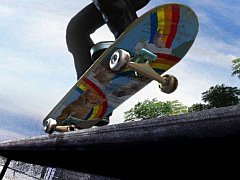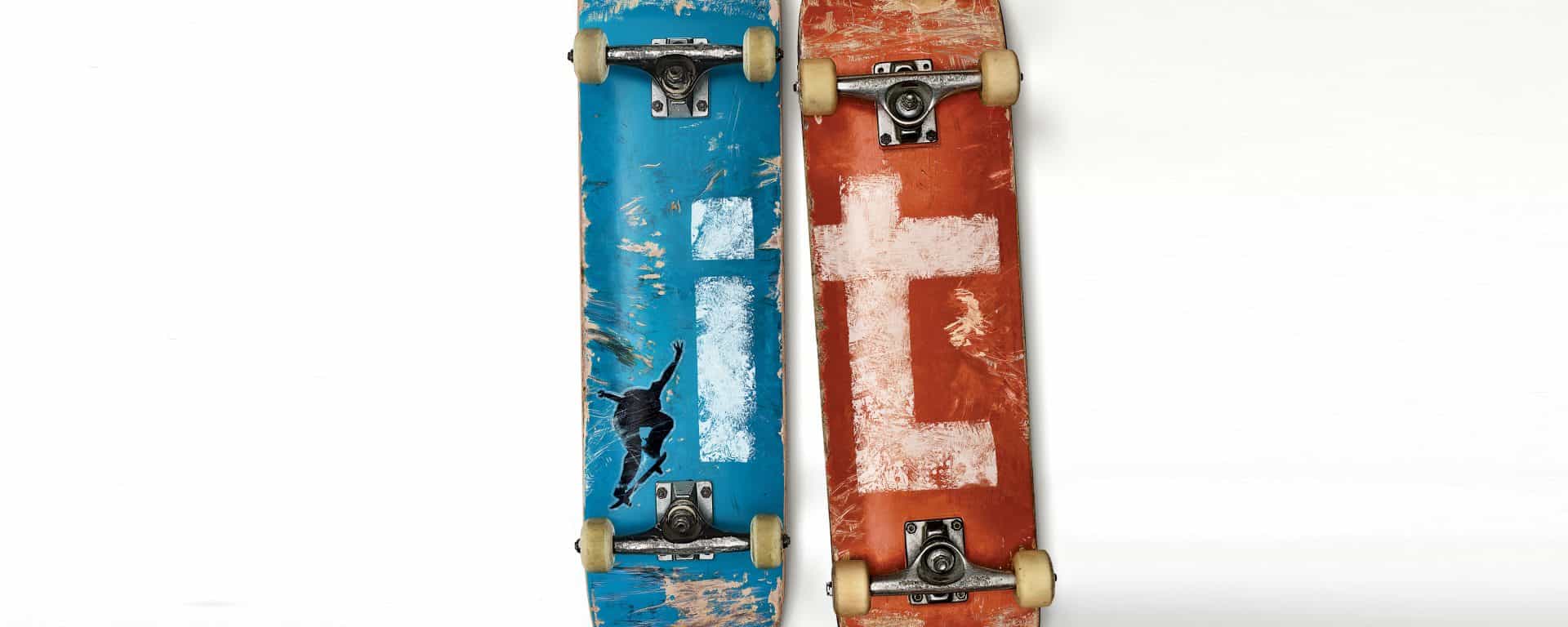You can trust VideoGamer. Our team of gaming experts spend hours testing and reviewing the latest games, to ensure you're reading the most comprehensive guide possible. Rest assured, all imagery and advice is unique and original. Check out how we test and review games here
Skate was great. So great, in fact, that it was essential, as you’ll know if you’ve read our 9/10 review. And it was also successful, hence the existence of Skate It on Wii. Question is, has the hardcore skater gameplay that pleased so many 360 and PS3 owners been dumbed down to cater to the family friendly Wii audience, or has EA refused to pander to the casual masses?
The answer is, unquestionably, the latter. Skate It on Wii is one of the hardest games you’ll find on Nintendo’s console. Why? It’s the same old Wii story, we’re afraid to report, which is starting to sound like a broken record. The Wii’s motion sensing technology just isn’t up to the job Skate It asks of it. Like getting your Jedi or Sith to perform combos in the recently released Star Wars: The Clone Wars: Lightsaber Duels, getting your skater to do what you want, when you want it, in Skate It is like getting a sloth to run the Gladiators assault course.
There are a lot of tricks to learn, which is fine, but the motions they require of the Wii Remote are not significantly different enough to make them intuitive to trigger. Ollies, nollies, manuals, shuv-its, all the classic skater tricks require movement of the Wii Remote that, while reflective of the motion the board would actually do in real life, don’t allow for the kind of control required by some of the game’s more difficult challenges. Get used to biting the dust: it’s going to happen a lot.
In a way, you have to admire EA’s refusal to make Skate It on Wii the party mini-game fest someone somewhere in the upper echelons of the company must have been tempted to create. However, its determination to make a hardcore skater game for skaters has resulted in a frustrating experience. The Flickit controls are, in theory, excellent. If you think of a pointed forward Wii Remote as a skateboard, the movements you need to do correlate to the movement a board would actually do relative to the various tricks. An ollie, for example, requires an upwards flick. A nollie requires a downward flick. A pop shuv-it requires an arc movement left or right, with a 360 pop-shuv-it requiring a circle movement. There are more, of course, many involving tilting the Wii Remote up or down (manuals), grabbing your board with the B button and then performing tweaks in the air by tilting the Wii Remote. There’s a lot to learn, and it’s all based on timing, which isn’t a criticism, but not being able to string these tricks together intuitively because of the unresponsive technology is. We’d say the right trick came out about 70 per cent of the time, and of that only around only 50 per cent of the time did the trick come out exactly when we wanted it to.
If it’s difficult to play Skate It with the Wii Remote and/or the Nunchuck (steering then governed by the thumb stick rather than tilting the Wii Remote), it’s nigh on impossible to play the game with the Wii Balance Board. Here you need to shift your weight to steer and apply increased pressure on different parts of the board to trigger the various tricks. Because there are loads of tricks in Skate It, and only six pressure sensitive zones on the Balance Board, you have to switch between four trick sets with the d-pad on the Wii Remote in order to access everything.
While you can adjust the sensitivity of the Wii Balance board, it’s an absolute nightmare to not only perform tricks, but to steer in the right direction. Once the novelty of actually standing on the Balance Board as if it’s a skateboard wears off, and it’ll wear off quickly, you’ll turn it off and return to the Wii Remote/Nunchuck control system with little regret. Playing the game with the Balance Board is so bad it makes playing the game with the normal controls seem perfect.
If you can put up with the frustrating controls you’ll find that Skate It is a little bare bones in the features count. Once you’ve created your skater, male or female, the career mode is where you’ll spend most of your time. Here you start off as a lowly skater in the fictional city of San Vanelona, which has been riddled with more disasters than Newcastle United Football Club. It’s deserted, which allows you to skate about uninterrupted with pro-skater Giovanni Reda filming and snapping your exploits (you never actually see him, but you constantly hear his annoying voice throughout). As you complete the various challenges on offer, which are all trick-based, you’ll gain respect and end up warping to various cities across the world, like London and Paris (also mysteriously deserted), and meet up with real life professional skaters who set you increasingly difficult challenges.
Skate It carries with it the subtlest whiff of open world gameplay. You’re able to warp at any time to any of the game’s zones via a world map, and then skate about each zone in a freestyle sense, ignoring the challenges and just having fun exploring the nooks and crannies of each spot. But if you want to progress in the career mode and climb the ladder to full sponsorship and recognition in Thrasher Magazine, you’ll have to complete the game’s challenges to unlock new ones and new areas. So, essentially, Skate It provides a number of predetermined challenges cleverly disguised as sandbox gameplay.
Beyond the career mode, there’s a Freeskate option, which allows you to, as you’d expect, freeskate around the various spots with the skaters you’ve unlocked via the career mode, a My Spot mode, which is a basic spot editor of sorts, and a Party Play mode that allows for two to four local players to pick from four challenges: Best Line, Best Trick, Hall of Meat (perhaps the best one – you’ve got to cause as much damage to your skater as possible – a bit like PAIN on PS3) and Best Time. While this is fun, the lack of any online multiplayer seems like a real oversight, one especially glaring when you consider that online competitive multiplayer is in the DS version of Skate It.
Usually graphics and audio are among the best things about EA games. Unfortunately that’s not the case with Skate It. The environments are barren and full of horrible textures and the skaters are deformed (our female skater had ridiculously disproportioned long arms and huge hands). On the plus side, the trick animations are solid. The track list is a mixed bag, with some decent classic ska and hip hop spoiled by some awful nu-metal punk rock. The sound effects, though, are excellent, with weighty grinding and board landing noises. You’ll wince, too, when your skater lands in a crumpled heap from a particularly brutal crash.
Skate It is better in theory than it is in practise. We can forgive the awful Wii Balance Board controls because you’re not forced to use Nintendo’s Wii Fit peripheral to play the game. But we just can’t get away from the fact that EA’s focus on creating a hardcore skater sim has resulted in a frustrating experience, for no other reason than the Wii itself isn’t built for that kind of game. You might say practice makes perfect, but when it’s this difficult, practising is too much of a chore. Unless you’re willing to put up with the game’s control flaws, you’re better off waiting for Skate 2 to come out next year.

/https://oimg.videogamer.com/images/6e40/skate_it_10.jpg)
/https://oimg.videogamer.com/images/d83f/skate_it_9.jpg)






